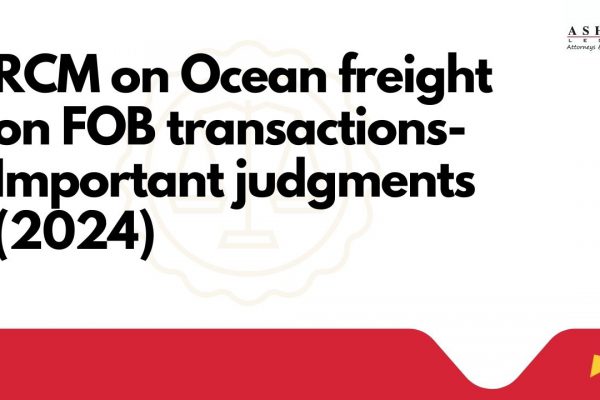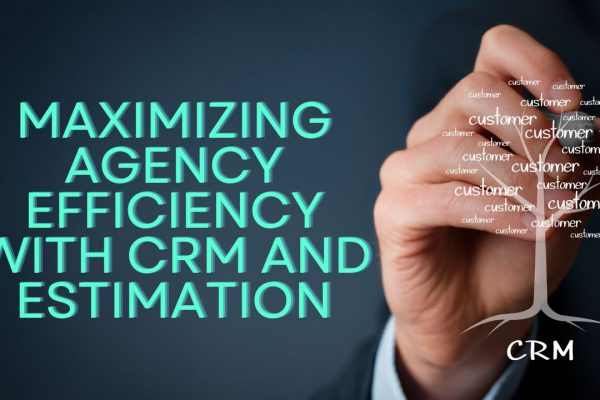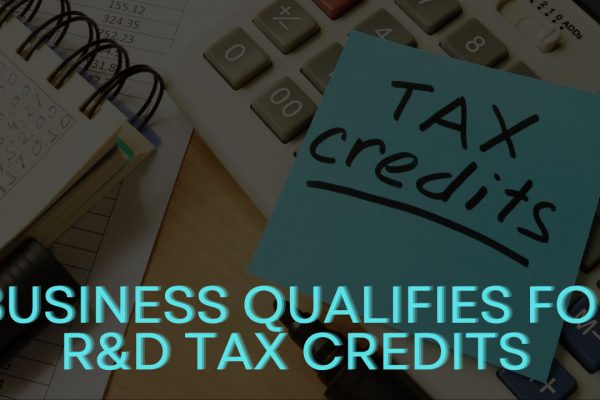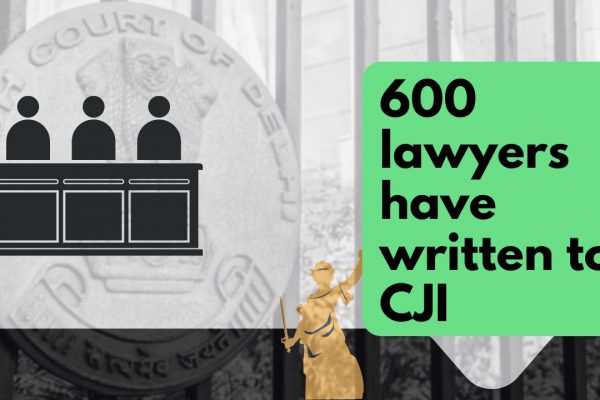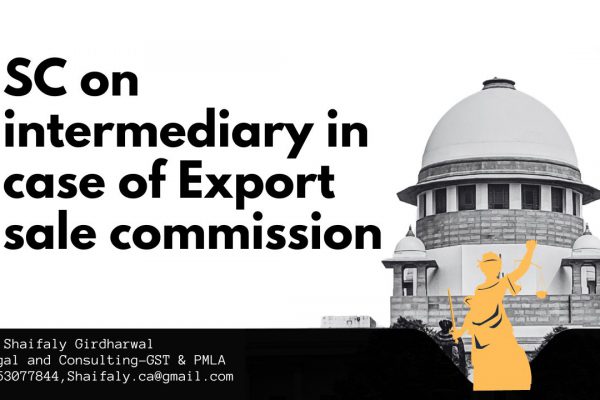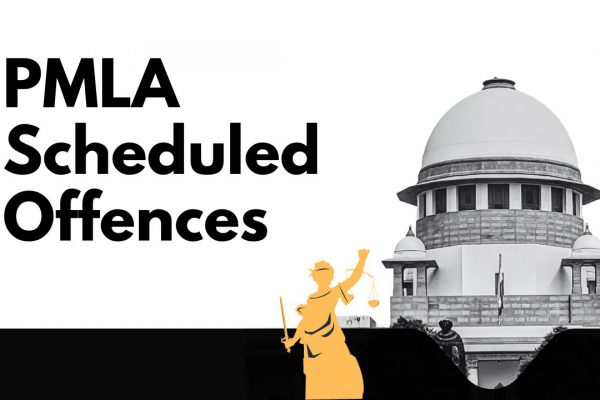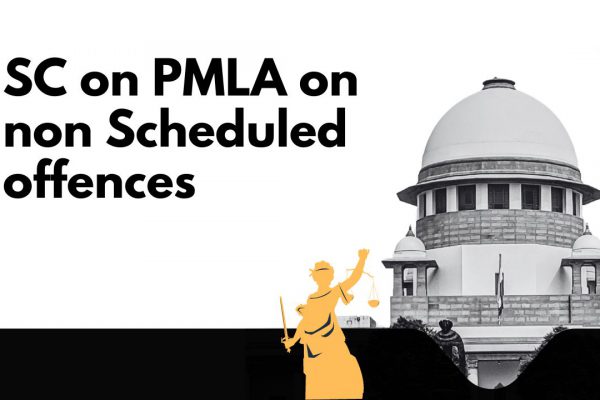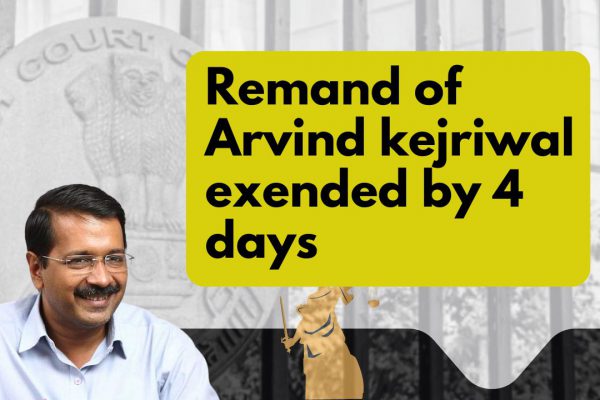Determination of Value of Supply (Under GST)
In order to reach the desired destination, we must know the address and the way. In the same way, to levy GST, we must know the value of taxable supply and the rules to calculate it. The value of a transaction as per the GST act is governed by the Sec 15 of the CGST Act, and the rules (27 to 35 ) of CGST Rules.
Related Topic:
Audit under GST by CA Mansi Jain
- Section 15
- Section 15(1)
- Section 15(2) (Inclusions)
- Section 15(3) (Exclusions)
- Section 15(4) and rules from 27 to 35
- (I) Rule 27
- (II) Definitions of ‘OMV’ and ‘Like-Kind and quality’
- (III) Rule 30
- (IV) Rule 31
- (V) Combined Examples for rules 27, 30, 31
- (VI) Rule 28
- (VII) Rule 29
- (VIII) Rule 31A
- (IX) Rule 32
- (X) Rule 32A
- (XI) Rule33
- (XII) Rule 34
- (XIII) Rule 35
- Conclusion
Section 15
The value of the taxable supply is ascertained as per the provisions of this section.
The procedure for discerning the value of the taxable transaction of the following types of supply is the same as per this section.
- Supply of goods/services
- Intrastate supply
- Interstate supply
- Export (Zero-rated) will be considered as interstate
Related Topic:
Detailed discussion on time and value of supply, download full ppt
Except in the case of Imports
Import of goods – IGST is applicable, but valuation is as per customs provisions
Import of Services – IGST is applicable as per RCM
Related Topic:
Handbook on Liability to Pay in Certain Cases under GST: ICAI
Section 15(1)
According to this subsection Value of a Supply of Goods or Services or both shall be the transaction value, which is the price actually paid or payable for the said supply of goods or services or both. This section is applicable only when the following conditions are satisfied;
- The supplier and the recipient are not related- Related party transactions are not covered in this section.
- Supply is for a price ( Consideration must be there)- The transactions without consideration are not eligible for this section.
- Price is the sole consideration ( Wholly monetary consideration )- Non-monetary, Part monetary, and barter (Exchange). These situations are not covered under this section.
Related Topic:
Construction Services Under GST – A Detailed Information
Notes
- If the transaction value of any supply is eligible to be valued as per section 15(1) i.e wholly monetary consideration, then there are some inclusions to be done in the transaction value of supply as per sec 15(2) and some exclusions to be made as per sec15(3).
- For the following transactions, sec 15(1) is not applicable. Sec 15(4) is applicable with the help of rules 27 to 35.
Related Topic:
GST on slump sale in the light of amendment in Supply
- Transactions with related parties. (even if wholly monetary)
- Transactions where consideration is not there.
- Transactions where consideration is not wholly in monetary form {(non-monetary, part monetary, barter (exchange)}
- Value of supply of goods or services made or received through an agent.
- Value of supply of goods or services or both based on cost.
- Value of supply in case of lottery, betting, gambling, and horse racing.
- Determination of value in respect of certain supplies.(Specific Methods for different types of supply)
- Value of supply of services in case of a pure agent.
- Rate of exchange of currency, other than Indian rupee, for determination of value.
Definitions of consideration and money as per this act.
Related Topic:
Lease & rental Services With or Without Operators under GST Scenario
According to the CGST act
Section 2(31) of CGST Act: (31) “consideration” in relation to the supply of goods or services or both includes– (a) any payment made or to be made, whether in money or otherwise, in respect of, in response to, or for the inducement of, the supply of goods or services or both, whether by the recipient or by any other person but shall not include any subsidy given by the Central Government or a State Government; (b) the monetary value of any act or forbearance, in respect of, in response to, or for the inducement of, the supply of goods or services or both, whether by the recipient or by any other person but shall not include any subsidy given by the Central Government or a State Government:
Proviso
Provided that a deposit given in respect of the supply of goods or services or both shall not be considered as payment made for such supply unless the supplier applies such deposit as consideration for the said supply;
Section 2(75) of CGST Act: (75) “money” means the Indian legal tender or any foreign currency, cheque, promissory note, bill of exchange, letter of credit, draft, pay order, traveller cheque, money order, postal or electronic remittance or any other instrument recognized by the Reserve Bank of India when used as a consideration to settle an obligation or exchange with Indian legal tender of another denomination but shall not include any currency that is held for its numismatic value;
Related Topic:
Reconciliation under GST
Section 15(2) (Inclusions)
As per this section following items have to be added to the transaction value of the supply;
- Taxes/duties/Cesses under other laws (i.e. non-GST laws and GST Compensation Cess)
- Fee/charges(levied under any law other than GST)
- Any amount (which was payable by the supplier, but paid by the recipient) and hence not included directly in the Transaction value of supply. Except the following ;
a. If any amount has been paid by the recipient which was not the liability of the supplier, it will not be added. (If the recipient and supplier both are known to a third party, and the recipient makes the payment of any amount to the third party which was under a dispute with the supplier, without the consent of the supplier.)
b. If any amount incurred by the recipient which was never an obligation of the supplier under the said contract of supply, then that shall not be included under this. For e.g. Free of cost moulds, dies supplied by Samsung (Recipient) to its component manufacturer (Supplier). The payment of moulds has been done by Samsung, but it was not a liability of the supplier. According to the CBIC circular, 47/21/2018 GST dated 8.6.2018
Related Topic:
Handbook on Finalisation of Accounts with GST Perspective: ICAI
Incidental expenses-including commission and packing- Any amount charged by the supplier in respect to supply (at the time of, or before the supply of goods or service) For e.g. Installation charges of the machine, Pre-delivery inspection charges for goods supplied, Testing done on recipient’s request and charged separately, and transportation charges.
Interest, late fee, the penalty for delayed payment of any consideration for the supply.
Related Topic:
Updated provisions of Registration under GST
- Note– According to Notification No. 12/2017- Central Tax (Rate) entry No.27
| Services by way of—
(a) extending deposits, loans, or advances in so far as the consideration is represented by way of interest or discount (other than interest involved in credit card services); |
Rate of tax-
Nil |
If the interest itself is the consideration for any supply of service of extending deposits, loans, or advances, then its output tax rate is Nil. The interest should have been paid for the first time on that service. The interest included in the EMI is taxable at a nil rate.
(b) But any interest paid on default of EMI is Taxable at 18%. The interest paid on previous unpaid interest is taxable at 18%.
- This interest is treated as a Value addition to the original supply price.
2. If GST is not recovered separately on such interest, then it will be considered as inclusive of interest.
Related Topic:
Deemed Duty Drawback under GST
NOTE
(1) For sec 15(1) where the price is the sole consideration (wholly monetary)
TOS of goods as per Sec 12(2) and TOS of service as per sec 13(2)
(2) For sec 15(2) Inclusions
TOS of Goods as per sec 12(6) and TOS of service as per sec 13(6)
(3) Sec 12(6) and sec 13(6) -TOS to the extent it relates to an addition in the value of supply by way of interest, late fee, the penalty for delayed payment of any consideration for a supply, it shall be deemed to be the date on which the supplier has received such addition in value.
Related Topic:
List of SAC’s for CA Professionals for GST
Any third-party subsidy (except in the case of Govt subsidy) which is directly linked to the price, is to be included in the value of the transaction.
For this subsection, the amount of subsidy received by the supplier shall be included in the value of the supply of the supplier.
| Subsidy by CG/SG | Directly linked to the price of supply | Not a consideration | Not included in the value of supply |
| Subsidy by CG/SG | Not directly linked to the price of supply | Not a consideration | Not included in the value of supply |
| Subsidy by any other party | Directly linked to the price of supply | Part of consideration | Included in the value of supply |
| Subsidy by any other party | Not directly linked to the price of supply | Part of consideration | Not included in the value of supply |
Related Topic:
C Form Under GST Scenario [Updated Information]
Section 15(3) (Exclusions)
Discount given in the following circumstances has to be excluded from the value of supply.
- If the discount is given by the supplier, up to the TOS (Time of supply);
a. Discount is recorded in the invoice issued for supply e.g. Trade discount
- If the discount is given, after the supply;
- Then the following conditions have to be fulfilled for their exclusion;
a. Discount has been granted as per an agreement existing before the TOS.
b. Such discount is known at or before the time of supply.
c. Discounts can be linked to the relevant tax invoices.
d. Related ITC has been reversed by the recipient of the supply.
- Such discount has been given by issuing a credit note (Sec 34)
- Such a discount leads to a reduction of value and thus reduces the output tax of the supplier and reduces the ITC of the recipient.
- The effect of such discount will be made in the time period of issue of a credit note.
Note- If a recipient deducts cash discount (for making a payment in stipulated time) or quantity discount (purchasing a definite quantity in the specified period) after the supply of goods, then all the post-supply conditions have to be fulfilled.
Related Topic:
Intellectual Property Rights Taxability Under GST Laws
Some examples of the applicability of sec 15(1), 15(2), and 15(3)
Inclusions
a). Taxes/duties/Cesses under other laws
| Supply of | Tax other than GST | Transaction value ( TV = amount on which GST is charged) | Price charged for the supply |
| Manufacturer supplying tobacco and its products | Excise duty(ED) | Basic + ED | Basic + ED + GST |
| Supplier of entertainment service | Entertainment tax (ET) | Basic +ET | Basic +ET + GST |
| Supply of service of renting of immovable property | Municipal Tax (MT) | Basic+ MT | Basic+ MT + GST |
Supply of tobacco of Rs 100000
Add Excise duty (12%) 12000
112000
Add GST on above (18%) 20160
Total invoice value 132160
b). Any amount (which was payable by the supplier, but paid by the recipient) and hence not included directly in the Transaction value of supply.
(I)The reason for adding this clause is the cases where the supplier tries to lower the value of the output supply by asking the recipient to make payment to a third person directly to whom the supplier had the obligation to pay. This is mostly possible when the ITC is not available to the recipient and he is indifferent towards the mode of payment and invoice i.e services for personal consumption. For example-
Supplier – Seven seas caterer
Recipient- Mr. A
Mr. A is hosting a function, where he has contracted Seven seas caterer for the supply of catering services. The supplier asks his cold drink vendor to deliver the goods at the venue in the morning. He also requests the recipient to pay directly to the vendor. In this manner, he will issue the invoice after reducing the amount already paid by the recipient. But the transaction value of supply will include the amount paid by the recipient to the vendor of the supplier. TV= Invoice amount + amount paid to the vendor or supplier
(II) Supplier Mr. A
Recipient Mr. B
Third Person Mr. C
If Mr. A and Mr. B, both are known to Mr. C. Mr. A supplies some goods to Mr. B. of Rs 200000. Mr. C uses his influence to make Mr. B pay to him 50000 in the account of Mr.A, knowing very well that such amount is in dispute with Mr. A. Mr. A was unaware of such payment and asked for the payment from Mr. B. Mr. B paid him 150000 and told that he had paid 50000 to Mr. C. Mr. A showed his displeasure and did not approve of such payment. He told Mr. B that he had made such payment without his consent and he has to make good for his balance payment. Mr. B pays Mr. A the balance of 50000 and tells Mr. C that he needs his money back or he will adjust it in his balance payment. Therefore payment by Mr. B to Mr. C without the consent of Mr. A is not going to increase the value of the transaction.
(III) Supply of free-of-cost moulds and dies by the recipient to the supplier. circular 47/21/2018 GST dated 8.6.2018
Mr. X (supplier) is a component manufacturer. His customer OEM (original equipment manufacturer) (recipient) supplied him moulds/dies to manufacture the components on a Free cost basis. The value of supply of such moulds /dies will not be included in the transaction value as it was not the liability of the supplier and it was not meant to be incurred by the supplier.
(IV) But if there is a contract between the OEM and the supplier is that the moulds/dies would be of the component manufacturer (supplier), and the same has been provided by the OEM on a FOC basis, then the amortized cost of such moulds/ dies will be added to the value of supply of components. In such case, the credit of input tax on moulds/dies which has been already availed by the OEM shall have to be reversed because now they would not be considered as provided by the OEM to the supplier in furtherance of his business.
(V) ABC Ltd (Recipient) has undertaken a contract of manufacturing and installing 1000 electrical towers for an electricity distribution co. It subcontracts PQR (supplier) Ltd to manufacture such towers and transport them to the required places. According to the contract, the requisite steel would be provided by ABC Ltd, on FOC basis, which would be used to manufacture such towers. The value of steel provided by the recipient to the supplier will not be included in the total transaction value of supply as it was not the liability of the supplier to pay for that steel. Explanation;
- ABC Ltd has purchased steel and paid GST on it. Its ITC will be available.
- It has purchased it in the furtherance of its business.
- The steel is not permanently transferred to the supplier, as it would be returned to it in the form of towers as per the contract.
- The recipient would be entitled to the input credit of both the purchase of steel and the supply of service of manufacturing such towers.
- Exception – If in case the contract envisaged that the steel would be procured by the supplier, and then, a) the recipient purchases it, and delivers to the supplier b) makes the payment for the steel, then in both the cases the value of steel would be included in the transaction value of the supply of service. If the Recipient has availed any ITC on purchase of steel, then it should be reversed and the ITC available on such supply of service would be available. It shall be included in the value of supply because it was the obligation of the supplier to pay for the steel.
(C) Incidental Expenses-including commission and packing
| Additional recoveries over and above the basic supply price | Incidental charges charged for anything spent up to the stage of delivery | Treatment for valuation |
| Freight | Yes | Included |
| Packing | Yes | Included |
| Insurance | Yes | Included |
| Warranty | Yes | Included |
| Testing charges for testing done before delivery of goods | Yes | Included |
| Installation | Yes | Included |
(D) Interest, late fee, the penalty for delayed payment of any consideration for the supply.
- If a person buys a residential flat from Godrej properties and makes the payment in EMIs.Then the supplier provides two services. Firstly the flat, whose consideration is the principal amount, and Secondly, the loan of that amount, whose consideration is the interest. Therefore such interest is in form of consideration and will have a nil output tax rate. If that EMI is not paid on time and the supplier charges penalty and interest for the period of default then, it shall be taxable as per the above entry. The TOS will be the time of receipt of such interest.
- If in the above case, the period of default was only 3 days and the supplier waives off the interest payable, then it will not be taxable on a notional basis, as it is not received. It becomes taxable only upon receipt. Ergo, if a debit note or invoice has been raised for such supply, then the liability of payment of output GST will arise only upon receipt.
(E) Any third-party subsidy (except in the case of Govt subsidy) which is directly linked to the price, is to be included in the value of the transaction.
ABC Institute is an educational institute running some vocational programmes.
| Situation | Price charged
ex-GST |
Subside recd. | TV =
15(1)+15(2) |
Remarks |
| Vocational Prog Course 1 (Actual course Fee 450000) | ||||
| Gen category | 450000 | Nil | 450000 | |
| Low-income grp | 250000 | 200000 from CG | 250000 | Govt subsidy is not considered as consideration |
| Voc Prog Course 2 (Actual course Fee 600000) | ||||
| Gen category | 600000 | Nil | 600000 | |
| Low income grp | 300000 | 300000 from Reliance foundation | 600000 | Non-govt subsidy is considered as a part of the value of transaction when directly linked to the price |
| Voc Prog special course 3 (Actual course Fee 900000) | ||||
| Gen category(1) | 700000 | 200000 from CG | 700000 | Govt subsidy is not considered as consideration |
| Low income grp | 500000 | a)
200000 from CG b) 200000 from Birla group c) 2000000 from Tata sons to built additional classrooms |
5L+ 2L=7L
700000 |
Govt subsidy is not considered as consideration
A non-govt subsidy, not directly linked to the price will not form the part of TV Non-govt subsidy, not directly linked to price, is not considered as part of TV |
| Gen category(2) | 900000 | 200000 from Adani group to buy computers | 900000 | Non-govt subsidy not directly linked to price is not considered as part of TV |
TV= Transaction value
Exclusions
(F) Specified Exclusions- Trade discount- Recorded in the supply Invoice, before or at the time of supply
Mr. S supplier
Mr. R recipient
Mr. S sells a product for Rs.10000. Due to a slump in the market, he offers a trade discount of 10% to a new customer.
Gross price 10000
Less Trade discount (1000)
Net Price 9000
GST on above (5%) 450
Invoice value 9450
(G) Post supply discount (Quantity discount)
Mr. S is a supplier of ballpoint pens. Mr. R is his regular customer. They entered into a covenant that if Mr. R purchases 3000 pens in a month, then he shall get a 2% discount in price. He made the following purchases and the supplier made the corresponding credit notes as below.
Purchases made by Mr. R during a month
| Particulars | Quantity | Total Price | GST on it (5%) | Invoice value |
| Inv No – 12 | 1000 | 3000 | 150 | 3150 |
| Inv No -15 | 500 | 1500 | 75 | 1575 |
| Inv No -17 | 1500 | 4500 | 225 | 4725 |
| Inv No – 21 | 1000 | 3000 | 150 | 3150 |
| Gross total | 4000 | 12000 | 600 | 12600 |
Credit notes issued by Mr. S
| Particulars | Quantity | Total Price | Discount
(2%) |
GST on discount
(5%) |
Gross total |
| Inv No – 12 | 1000 | 3000 | 60 | 3 | 63 |
| Inv No -15 | 500 | 1500 | 30 | 1.5 | 31.5 |
| Inv No -17 | 1500 | 4500 | 90 | 4.5 | 94.5 |
| Inv No – 21 | 1000 | 3000 | 60 | 3 | 63 |
| CR note | 240 | 12 | 252 |
The supplier’s output liability will be reduced by Rs 12 and sales by Rs 240.
Note
- Previously the credit notes had to be issued relating to the invoice i.e the supplier had to mention the invoice number against which he was issuing a credit note. Therefore separate credit notes had to be issued against each invoice. But according to an amendment in sec 34, this condition of matching invoice with the credit note has been removed and the supplier can issue a single credit note against multiple invoices without mentioning the Invoice no. (Applicable from 1.02.2019)
- If in the above case, the discount was allowed after the issuing of invoices, and there was no previous contract at the time of supply, then it will not be excluded from the output tax. The supplier may take a reduced consideration but it will not affect the overall output liability of the supplier. The recipient will get the benefit of full ITC as well as reduced consideration. The supplier has to show full sales amount and the reduced consideration as short recovery.
Related Topic:
Updated provisions of Time of Supply under GST
Section 15(4) and rules from 27 to 35
According to sec 15(4), “Where the value of supply of goods or services or both cannot be determined by sec 15(1), the same shall be determined in such manner as may be prescribed”. (with the application of rules 27 to 35).
Those scenarios we have mentioned earlier where the value of supply is ascertained as per sec15(4). We shall explain every rule and then give some practical examples for a better understanding of their applicability.
(I) Rule 27
Value of supply in cases where consideration is not wholly in monetary terms.
Here the consideration can be divided into two parts, monetary consideration (MC) and non – monetary consideration (NMC). In this rule, consideration is necessary. Even if the whole consideration is non-monetary, it will also be covered by this rule.
Where the supply of goods or services is for a consideration, not wholly in money, the value of the supply shall be;
| Clause | Conditions | Value as per the rule ( in preferential order) |
| (a) | The open market value(OMV) of such supply; | |
| (b) | If OMV is not available under clause (a) | The sum total of;
(i)Consideration in money (MC)and (ii)Any such further amount which is money equivalent of consideration which is not in monetary form(NMC) I.e.( MC+ money value of NMC) |
| (c) | If the value of supply is not determinable in clause (a), or (b) | The value of supply of goods or services or both of like kind and the quality. |
| (d) | If the value of supply is not determinable in clauses (a), (b), or (c) | The sum total of ;
(i) Consideration in money (ii) Any such further amount which is money equivalent of consideration which is not in monetary form, determined by the application of rule 30 or rule 31 I.e. (MC+ money value of NMC determined by rule 30 or 31) |
Now we shall tell you the required definitions and also the rules 30 and 31
(II) Definitions of ‘OMV’ and ‘Like-Kind and quality’
OMV- Open market value of supply of goods or services or both means, “the full value in money, excluding any type of GST( IGST, CGST, SGST, UTGST) and cess payable by a person in a transaction, where the supplier and the recipient of the supply are not related and the price is the sole consideration, to obtain such supply at the time when the supply being valued is made.
Like-Kind and quality- Supply of goods or services or both of like kind and quality means,” any other supply of goods or services or both made under similar circumstances that, in respect of the characteristics, quality, quantity, functional components, materials, and reputation of the goods or services or both, first mentioned, is the same as, or closely or substantially resembles, that supply of goods or services or both.
Monetary Consideration- MC
Non-Monetary Consideration – NMC
(III) Rule 30
Value of supply of goods or services or both based on cost.
Where the value of a supply of goods or services or both is not determinable by any of the preceding rules (Rule 27, 28, 29), the value shall be one hundred and ten percent of the following;
a. The cost of production or manufacture of such goods or ; (for a manufacturer)
b. Cost of acquisition of such goods ( For a trader)
OR
c. Cost of provision of such services ( For a service provider)
Note
- Supplier of service has the option to disregard this rule and instead make best judgment valuation under Rule 31.
- This rule (Rule 30) can also be used to determine the value of supply where there is no consideration.
(IV) Rule 31
Residual method for determination of the value of supply of goods or services or both.
This rule is applied when the value of goods or services or both cannot be determined by using rules 27 to 30.
According to this rule, the same shall be determined using reasonable means consistent with the principles and general provisions of sec 15 and these rules;
Proviso to rule 31
Provided that in case of a supply of services, the supplier may opt for this rule, disregarding rule 30.
Note
- This rule (Rule 31) can also be used to determine the value of supply where there is no consideration.
(V) Combined Examples for rules 27, 30, 31
(i) Where a new phone is supplied for a consideration of Rs 20000 and an old phone. The price of the new phone is Rs 24000, without any exchange. The OMV of the new phone is 24000. The value of supply is 24000. Clause (a) of rule 27.
(ii) A new Laptop is supplied for a consideration of Rs 40000 along with a printer (manufactured by the recipient and its selling price by the manufacturer is 4000), but the OMV of the laptop is not known. Therefore the value of supply will be 44000. Clause (b) of rule 27.
(iii) A new Laptop (price not known) has been supplied for a consideration of Rs 55000, along with an old TV. The supplier has got the valuation done of that old TV from an old TV dealer. He is ready to purchase it at Rs 10000. If the supplier gets it refurbished by spending 5000 more than it may sell for 20000. There is no OMV of the Laptop.
In this case, the value of supply will be MC+ money value of NMC (according to rule 31, FMV i.e 10000, which the supplier can get immediately). Therefore the value of supply will be 65000. Clause(d) of rule 27
(iv) ABC Ltd is a medicine manufacturer. Its profit margin is 50% on sales. It makes the following two supplies;
Case 1 – It sold goods to a medicine dealer for Rs 60000. Therefore TV will be as per sec15(1) i.e. 60000
Case 2 – It distributed some free samples of medicines to various doctors. The raw material was all GST paid and it had already availed all the ITC. The said supply is without consideration, therefore sec 15(4) will be applicable. Rule 30 (based on cost) can be used.
The selling price of these medicines was Rs 30000. Therefore the cost will be 15000. The TV will be 110% of the cost i.e. 16500.
(v) ABC & co is a consultancy firm having its office ( 2 rooms exclusively for the use of ABC & co) in the premises of another company, PQR Ltd. It provides consultancy services to that company. It receives 18 lakh per annum for its consultancy services. The two rooms would fetch approximately 40000 per month rent. ABC & co pays GST only on 18 lakhs.
In the present case, the total consideration is MC+ NMC ( facility of 2 rooms). Therefore sec15(1) is not applicable 27 shall apply. The OMV of consultancy services is not available. As per clause (b) 1800000+ 480000= 2280000 (MC+ money value of NMC, 40000*12). Thus ABC & co should pay GST on 2280000. The value of supply will be the MC +market value of rent of the rooms.
(VI) Rule 28
This rule determines the Value of supply of goods or services or both between Distinct [as per sec 25(4) and 25(5)] or Related Persons, other than through an agent.
The Value of supply of goods or services or both between Distinct [as per sec 25(4) and 25(5)]
Or
Where supplier and recipient are related, other than through an agent shall be;.
| Clause | Condition | Transaction value (in preferential order) |
| (a) | The OMV of such supply | |
| (b) | If OMV is not available under clause (a) | The value of supply of goods or services or both of like kind and quality. |
| (c) | If the value of supply is not determinable in clause (a), or (b) | The value as determined by the application of rule 30 or rule 31, in that order |
Proviso 1
In the case where goods are intended to be further supplied by the recipient. Then at the option of the supplier, the TV will be an amount equivalent to 90% of the price charged for that supply of goods of like kind and quality by the recipient to his customer not being a related person.
Proviso 2
In the case where the recipient is eligible for full ITC. The value declared in the invoice shall be deemed to be the OMV of supply of goods or services or both.
Explanations
- These provisos override the valuation manner prescribed in clauses (a),(b),(c) above.
- In the case of the first proviso, where the supply is between related parties or a branch transfer, then a supplier can opt for transfer of stock at 90% of the price charged by the recipient from his customer.
- In the case of the second proviso, where the supply is between related parties or a branch transfer, where the recipient is eligible for full ITC, a supplier can opt either for transfer of stock at cost, at above cost, or at below cost.
Notes
- Such supply can be for without consideration also.
- Such supply can be for MC or NMC.
As per the CGST act
Distinct person as per Sec 25(4) and 25(5)
25(4) A person who has obtained or is required to obtain more than one registration, whether in one State or Union territory or more than one State or Union territory shall, in respect of each such registration, be treated as distinct persons for the purposes of this Act.
25(5) Where a person who has obtained or is required to obtain registration in a State or Union territory in respect of an establishment, has an establishment in another State or Union territory, then such establishments shall be treated as establishments of distinct persons for the purposes of this Act.
Related person as per sec 15 and Agent as per sec 2 (5)
2(5) “agent” means a person, including a factor, broker, commission agent, arhatia, del credere agent, an auctioneer, or any other mercantile agent, by whatever name called, who carries on the business of supply or receipt of goods or services or both on behalf of another;
Related person As per sec15, Explanation for this act
persons shall be deemed to be “related persons” if––
(i) such persons are officers or directors of one another’s businesses;
(ii) such persons are legally recognised partners in business;
(iii) such persons are employer and employee;
(iv) any person directly or indirectly owns, controls, or holds twenty-five percent. or more of the outstanding voting stock or shares of both of them;
(v) one of them directly or indirectly controls the other;
(vi) both of them are directly or indirectly controlled by a third person;
(vii) together they directly or indirectly control a third person; or
(viii) they are members of the same family;
the term “person” also includes legal persons;
persons who are associated in the business of one another in that one is the sole agent or sole distributor or sole concessionaire, how so ever described, of the other, shall be deemed to be related.
Illustrations of the above (All amounts are without GST)
(A) H ltd. (Holding co) supplies Product B To its subsidiary S ltd. The consideration received was Rs 50000. H ltd sells the same product to other unrelated customers for Rs 300000. S Ltd further sells goods of like kind and quality for Rs 350000.
- In this case, since it is evident whole consideration is not received, therefore Sec 15(4) shall apply. Moreover, it is a transaction between related persons. Rule 28 will be applicable. OMV is 300000. TV as per clause (a) will be 300000.
- The supplier (H ltd) has one more option. As per proviso 1, the supplier can override clause (a) and take 90% of the price of goods of like kind and quality sold by S ltd i.e. 90%* 350000= 315000. TV will be 315000.
- Since as per the example invoice is not issued, till now, proviso 2 is not applicable. In
- TV in both the scenarios is applicable, as per clause (a) or proviso 1. Output tax paid by H ltd will become ITC for S ltd.
(B) A ltd (HO) supplies product C to its branch office A ltd (BO). There was no consideration. A ltd (HO) sells the same product to unrelated customers for 55000. It has issued an invoice for 40000 as the transfer price. A ltd (BO) sells goods of like kind and quality for Rs 65000.
- In this case, since consideration is not received, therefore Sec 15(4) shall apply. Moreover, it is a transaction for branch transfer. Rule 28 will be applicable. OMV is 55000. TV as per clause (a) will be 55000.
- Supplier A ltd (HO) has more options. As per proviso 1, the supplier can override clause (a) and take 90% of the price of goods of like kind and quality sold by A ltd (BO) i.e. 90%* 65000= 58500. TV will be 58500.
- Since as per the example, an invoice has been issued for 40000, proviso 2 is applicable. The Invoice value will be deemed to be the OMV. Therefore TV will be 40000.
- TV in all the scenarios is applicable, as per clause (a) or proviso 1 or proviso 2 according to the option of the supplier. Output tax paid by A ltd (HO) will become ITC for A ltd (BO).
(C) S Ltd (Deodorant manufacturer) supplying deodorants to its related party T ltd.@Rs 500 per unit. Units supplied 1000 (250 ml). It also supplied testers (100 units) free of charge ( without consideration). They are of a smaller size as compared to the product sold (15 ml). The value of supply for the testers without consideration to the related party shall be determined by applying Rule 28 and Rule 30. i.e 110% of the cost of production.
If however CoP, is not available/ ascertainable for a time being, then the value shall be determined by applying rule 28 along with rule 31( Best judgment value).
It implies determining by reasonably available means, and one of them could be applying a pro-rata reduction in price due to difference in quantity.
Related Topic:
Classification & Importance of HSN under GST
(VII) Rule 29
This rule determines the Value of the supply of goods made or received through an agent.
The Value of supply of goods between the principal and its agent shall be;
| clause | Condition | Transaction value (in preferential order) |
| (a) | (i) the OMV of the goods being supplied,
Or, at the option of the supplier, be (ii) 90% of the price charged for that supply of goods of like kind and quality by the recipient to his customer not being a related person, where the goods are intended for further supply by the said recipient. |
|
| (b) | If the value of supply is not determinable in clause (a) | The value as determined by the application of rule 30 or rule 31, in that order |
Note
The agent can be related ( being a sole selling agent or otherwise) or unrelated. It is indifferent.
Example
(I) In a situation where a principal (supplier) has supplied groundnut to his agent (recipient) . The agent, subsequently further supplies groundnut of like kind and quality at Rs 6000 per quintal on the day of supply. Another supplier sells groundnut of like kind and quality at Rs 5550 per quintal to the said agent.
The value of supply by the supplier to the agent will be either of the two; (clause (a))
(i) OMV=5550 per quintal, therefore TV= 5550 per quintal OR
(ii) At the option of the supplier, TV = 90% * 6000= 5400 per quintal
We have already seen rules 30 and 31
(VIII) Rule 31A
This rule was introduced by the following notification
CGST Rule 31A inserted vide Notification 3/2018 Central Tax dt. 23/01/2018.
Sub-rule (2) was amended by the following notification.
- Sub-rule (2) substituted w.e.f. 01/03/2020, vide Notification 8/2020 Central Tax dt. 02/03/2020,
This rule is applicable in determining the value of supply in special cases of Lottery, Betting, Gambling, and Horse Racing.
(1) Supply of Lottery
(i) The value of supply of lottery shall be deemed to be 100/128 of the higher of the two (a) face value of ticket or
(b) the price as notified in the Official Gazette by the Organising State, whichever is higher.
Explanation:- For the purposes of this sub-rule, the expression “Organising State” has the same meaning as assigned to it in clause (f) of sub-rule (1) of rule 2 of the Lotteries (Regulation) Rules, 2010.
Note-The tax has to be paid on the supply of lottery on RCM basis by the recipient only one time, not by subsequent sub-dealers. The rate of tax @28%.
(2) Supply of betting, gambling, or horse racing in a race club
The value of supply of actionable claim in the form of chance to win in betting, gambling, or horse racing in a race club shall be 100% of the face value of the bet or the amount paid into the totalisator.
Explanation:- Subrule (2) implies that GST will be levied on the amount of bet placed or the amount paid into the totalisator instead of the commission or share or revenue of the race club. It shall be taxable at 28%
(IX) Rule 32
Determination of value in respect of certain supplies.
(1) The supplier of service of sale/purchase, or exchange of foreign currency.
The supplier of service of sale/purchase, or exchange of foreign currency has two options, namely (1) and (2) to ascertain the value of supply of such service. He can choose either of the two and it cannot be withdrawn during the remaining part of that financial year;
Normal Option 1
(1)The value of supply of services in relation to the purchase / sale of foreign currency, including money changing, shall be determined by the supplier of services in the following manner;
There may be two conditions-
(A) When one of the currencies (exchanged from, or to) is the Indian currency
It can also have further two conditions;
(a) When RBI Reference rate of other currency (other than the Indian currency) is available
(b) When the RBI Reference rate of the other currency (other than the Indian currency) is not available
For condition (A) (a)
(a) for a currency, when exchanged from, or to, Indian Rupees, the value shall be equal to the difference in the buying rate or the selling rate, as the case may be, and the Reserve Bank of India reference rate for that currency at that time, multiplied by the total units of currency:
For condition (A) (b)
(b) In the case where the Reserve Bank of India reference rate for a currency is not available, the value shall be one percent. of the gross amount of Indian Rupees provided or received by the person changing the money:
(B) When both the currencies (exchanged from, or to) are not Indian currencies, the following is applicable;
(c) In the case where neither of the currencies exchanged is Indian Rupees, the value shall be equal to one percent of the lesser of the two amounts the person changing the money would have received by converting any of the two currencies into Indian Rupee on that day at the reference rate provided by the Reserve Bank of India.
Normal option 1
| Situation | Value of taxable service |
| When a currency is exchanged from, or to, Indian currency
(RBI ref rate is available) |
Pur of foreign ex = [RBI rate- Buying rate] * units of for- ex bought
Sale of foreign ex = [selling rate- RBI rate] * units of for- ex sold |
| When the currency is exchanged from, or to, Indian currency
(RBI ref rate is not available) |
1% of the gross amount of Indian currency (which is exchanged from, or to, Foreign Exchange. |
| If neither of the currency exchanged is the Indian currency | 1% of the lower of the two;
A) RBI rate* units of for-exch sold B) RBI rate* units of for-exch bought |
Special Option 2
(2) When a person is supplying the services of sale/purchase, or exchange of foreign currency, he may exercise the below option to ascertain the value of such service for a financial year and such option shall not be withdrawn during the remaining part of that financial year;
a) at the option of the supplier of services, the value in relation to the supply of foreign currency, including money changing, shall be deemed to be-
(i) one percent of the gross amount of currency exchanged for an amount up to one lakh rupees, subject to a minimum amount of two hundred and fifty rupees;
(ii) one thousand rupees and half of a percent. of the gross amount of currency exchanged for an amount exceeding one lakh rupees and up to ten lakh rupees; and
(iii) five thousand and five hundred rupees and one-tenth of a percent. of the gross amount of currency exchanged for an amount exceeding ten lakh rupees, subject to a maximum amount of sixty thousand rupees.
| Gross amount of currency exchanged per transaction (in INR) | Transaction value | The minimum and maximum amount of transaction value |
| Up to Rs 100000 | 1% of currency exchanged | Minimum 250 |
| Exceeding 1 lakh till 10 lakh | Rs 1000+ 0.5% of currency exchanged in excess of 100000 | |
| Exceeding 10 lakh | Rs 5500+ 0.1% of currency exchanged in excess of 1000000 | Maximum
60000 |
Examples
Option 1
| S No | Various situations to determine TV | TV as per rule 32 (option 1) |
| 1 | Mr. A, an exporter, has export proceeds of $20000. He wants to exchange it for INR. The bank gave the quote of Re/$= 75-76. The RBI ref rate on that day was Rs 75.5/$ | The value of supply of service
= 20000*(75.5-75)= Rs 10000 |
| 2 | Mr. B, an importer, has to make an import payment of GBP 10000. The bank gave the quote of Re/GBP = 88 – 89.5. The RBI ref rate on that day was Rs 88.8/GBP | The value of supply of service
= 10000*(89.5-88.80)= Rs 7000 |
| 3 | Mr. C, an importer, has to make an import payment of X currency= 15000. The bank gave the quote of Re/X = 55 – 56.5. | The value of supply of service = 15000*56.5*1%=
8475 The bank is selling X at Re 56.50/X |
| 4 | A cross currency quote for GBP/$ in HDFC bank is 0.85-0.90 . A trader has to exchange 30000 GBP into $. The RBI ref rate for Re/GBP is 88.5 and for Re/ $ is 75.5 | No of $ purchased=30000/0.85 = 35294 $
TV will be 1% of the lower of the two, 1%* 2655000= 26550 (i) Pur cur GBP 30000*88.5=2655000 (lower) (ii) sold cur $ 35294*75.5=2664697 |
Option 2
| S No | Gross amount of currency exchanged per transaction | Transaction value (subject to min amount of TV) |
| 1 | 75000 | 75000* 1%= 750 |
| 2 | 10000 | 10000* 1%=100, but min 250 , TV=250 |
| 3 | 550000 | 1000+ 0.5%* 450000 = 3250 |
| 4 | 1250000 | 5500+ 0.1% * 250000 = 5500+250=5800 |
| 5 | 2500000 | 5500+ 0.1% * 1500000 = 5500+ 1500= 7000 |
(2) The value of the supply of services in relation to booking of tickets for air travel, provided by an air travel agent.
The value of the supply of services in relation to booking of tickets for air travel provided by an air travel agent shall be deemed as;
(a) Five percent. of the basic fare in the case of domestic bookings, and
(b) Ten percent. of the basic fare in the case of international bookings.
Explanation.– Basic fare means that part of the airfare on which commission is normally paid to the air travel agent by the airlines.
Example
| Particulars | Basic Fare | Other charges and fee | TV and Taxes(GST) | Total value of Ticket |
| Domestic | 150300 | 9780 | 150300*.5%= 7515 *18% = 1353 | 161433 |
| International | 325400 | 21650 | 325400*10%= 32540 *18%= 5857 | 352907 |
(3)The value of supply of services in relation to the life insurance business.
The value of supply of services in relation to life insurance business shall be,-
| clause | Particulars of premium | TV |
| (a) | gross premium charged from a policyholder
(Minus) The amount allocated for investment, or savings on behalf of the policyholder
|
The balance amount ( if the amount of investment is intimated to the policyholder at the time of supply of service) |
| (b) | in case of single premium annuity policies other than (a) | 10% of the single premium charged from the policyholder
|
| (c) | in all other cases, | 25% of the premium charged from the policyholder in the first year
12.5% of the premium charged from the policyholder in the subsequent years
|
Proviso
In the case where the entire premium paid by the policyholder is only towards the risk cover in life insurance. i.e. In a Pure risk policy, the entire premium will be the transaction value.
Example
ABC Insurance Co Ltd has collected 250 lakh of gross premium in the F/Y 2021-2022. Out of this premium, 180 Lakhs is allocated towards investment on behalf of the policyholders. The co. has started its operations last year only. The TV according to the following situations will be;
(a) The amount of investment was intimated to the policyholders at the time of inception of the policy. The TV will be (250-180) = 70 lakhs.
(b) The amount of investment was not intimated to the policyholders at the time of inception of the policy. The TV will be 250*25% = 62.5 Lakhs
(c) If the gross premium charged had three components. 70 lakhs for a one-time single premium policy. 80 lakhs for pure risk cover policy. 100 lakhs for a composite policy where investment was 70 lakhs and was intimated to the policyholders at the time of inception of the policy.
The TV will be;
(1) For a one-time single premium policy. 70*10% = 7 lakhs
(2) For pure risk cover policy 80 lakhs
(3) For composite policy (100 lakhs) where investment amount was 70 lakhs and was intimated to the policyholders at the time of inception of the policy. 100-70=30 lakhs
Related Topic:
E-Invoicing New Era Under GST And Indian Economy
(4) Where a taxable supply is provided by a person dealing in buying and selling of second-hand goods i.e., used goods as such or after such minor processing which does not change the nature of the goods and where no input tax credit has been availed on the purchase of such goods.
Option to go for normal method of taxation
Such a person has the option to pay tax under the normal provisions of GST (ITC available) or opt for the margin scheme. In that case, he will receive a tax invoice on the purchase of goods and avail of the ITC. The output tax will be on the total value of the transaction.
According to the Margin scheme
- Normally the output tax is calculated on the transaction value of the goods sold. But in this case, Output tax is calculated on the difference between the value at which the goods are supplied and the price at which the goods are purchased (margin)
- If there is no margin, no GST is charged for such supply.
- The purpose of the scheme is to avoid double taxation as the goods, having once borne the incidence of tax, re-enter the supply and the economic supply chain.
The value of supply shall be ;
The difference between the selling price and the purchase price and where the value of such supply is negative, shall be ignored:
Conditions for availing of the Margin scheme
- He can be a dealer of any product (car, fridge, Laptop, Computer, etc). The person should be engaged in the supply of taxable goods.
- Has to be GST registered
- Has not availed ITC on purchase of such goods.
- This scheme is not mandatory. The dealer can even change the option in between the F/y
- The registered person should not process the goods in such a way that changes the nature of the goods.
- This scheme is not applicable in the case of jewellery.
Exemption of RCM if goods are purchased from an unregistered person.
In the situation where a registered person, who is engaged in the supply of second-hand goods, purchases(intrastate supplies) any goods from an unregistered person, then is not required to pay tax on RCM basis because the same is exempted vide notification no 10/2017-CT (R) dated 28/06/2017.
Applicable rates in Margin valuation scheme.
- All the second-hand goods except Motor vehicles, attract the same tax rate which is applicable for first-hand goods.
- However, for second-hand motor vehicles, (only for intrastate supplies) tax rates are notified in Notification No.8/2018 CT(R) which are 12% and 18% according to the variety of the engine and the car. (concessional rates)
Valuation in respect of Repossessed goods from Defaulting borrowers.
In the case where goods are repossessed from a defaulting borrower, who is not registered, for the purpose of recovery of a loan or debt, then;
Purchase price ( for this rule) shall be deemed to be the purchase price (Actual price of the new goods, at the time it was purchased by that defaulting borrower) reduced by five percentage points for every quarter or part thereof, between the date of purchase by that defaulting borrower and the date of disposal by the person making such repossession.
Note- In the case where the defaulting borrower is registered then, the Margin scheme will not apply, and the lending agency will charge output GST on the value of supply.
Example (Margin scheme)
1 A dealer of second-hand laptops purchased a second-hand laptop for 10000. He spent Rs 3000 (plus GST) on its refurbishment and sold it for 16000. The TV will be (16000 -10000) = 6000.The input GST on 3000 can be adjusted against output GST on 6000. The refurbishment cost will not be included in the purchase. The ITC on the purchase will not be available ( in this situation it is not paid, but even if paid, then also not available)
Example 2 (Repossession by the lender agency)
2 Suppose HDFC bank has given a retail loan for purchase of a car to Mr.C. He could not pay the EMIs. The bank repossessed the car from Mr.C and sold it to MR. D, who is a second-hand goods dealer.
Cost of the new car when purchased by Mr.C =700000/-(Inclusive of GST)
Date of purchase= 01/01/2020 Date of repossession of the good= 31/07/2021
Date of disposal to Mr. D= 10.08.2021 No of quarters elapsed= 4+3=7
The purchase price for the bank will be 700000 – (7*5%*700000) =700000- 245000=455000
The car has been resold by the bank to Mr. D for 470000. The bank charges 18% GST on the TV. Mr. D makes some expenses of Rs 20000 (plus GST) in repairs and further sells it for 600000 and charges 18% GST
TV for the bank (sale price- purchase price)
470000- 455000= 15000, GST on the same @18%=2700
TV for Mr. D (sale price – purchase price) Margin scheme on further sale
TV = 600000 – (470000+2700) = 127300 (ITC on purchase not available)
GST on TV= 18%* 127300 = 22914
Less ITC on refurbishment (3600)
20000*18% 3600
Net GST liability 19314
Notes
- The GST paid by Mr.D on the purchase of the old car to the bank is not available. But ITC on refurbishment is available.
- The expense of refurbishment is not reduced from the sale price. It is not considered a purchase.
- The date of repossession is not considered. The date of sale of repossessed goods is considered. Therefore, if the date of sale is delayed, then purchase cost will reduce and TV will increase.
- If the defaulting borrower would have been ABC ltd (registered person), then the bank would have charged output GST on the total value of supply i.e. 470000. It would have increased the cost for the purchaser of the repossessed car. But then it would have kept the chain of GST applicable and the dealer of second hand goods would have also availed ITC. Margin scheme would not have been applicable
(5) Supply of a service of token, or a voucher, or a coupon, or a stamp (other than a postage stamp) which is redeemable against a supply of goods or services or both) e.g Sodexo, Gift coupons issued by companies.
The value of a supply of such service shall be;
Equal to the money value of the goods or services or both redeemable against such a token, voucher, coupon, or stamp.
Note- The purchase price of such coupons is not the TV. The value against which they can be redeemed is the TV.
Illustrations
1 A ltd sells coupons that are redeemable at some selected Food stores at Rs 500. A ltd sells them at Rs 350. Therefore TV will be 500, not 350.
2 B Ltd sells gift vouchers for Rs 900 which can be redeemed for Rs 1100 upon purchase of any of their products. Then, TV for such a coupon will be 1100, not 900.
(X) Rule 32A
Value of supply of goods and services provided by Central Government Notified Service Providers
There are cases where the Central Government notifies certain service providers to supply goods and services. Further, such a notification is given by the government on the recommendation of the Council. And this is done as per Section 25, paragraph 2 of Schedule I of the CGST Act.
Accordingly, the value of taxable services provided by such a class of service providers shall be deemed to be NIL.
(XI) Rule33
.
Value of supply of services in case of pure agent
For calculating the value of supply of services in case of a pure agent.- the expenditure or costs incurred by a supplier as a pure agent of the recipient of supply shall be excluded from the value of supply, if all the following conditions are satisfied, namely,-
(i) the supplier acts as a pure agent of the recipient of the supply when he makes the payment to the third party on authorization by such recipient;
(ii) the payment made by the pure agent on behalf of the recipient of supply has been separately indicated in the invoice issued by the pure agent to the recipient of service; and
(iii) the supplies procured by the pure agent, from the third party as a pure agent of the recipient of the supply, are in addition to the services he supplies on his own account.
Explanation.- For this rule, the expression pure agent means a person
who-
| Condition to be fulfilled | Necessary proof for fulfilling the condition |
| (a) enters into a contractual agreement with the recipient of supply to act as his pure agent to incur expenditure or costs in the course of supply of goods or services or both;
|
A separate Agency agreement shall exist |
| (b) neither intends to hold nor holds any title to the goods or services or both so procured or supplied as pure agent of the recipient of supply;
|
Invoices of such supplies are issued in the name of the recipient (not in the name of the pure agent) |
| (c) does not use for his own interest such goods or services so procured; and | No consumption of such supplies at his own end |
| (d) receives only the actual amount incurred to procure such goods or services in addition to the amount received for supply he provides on his own account.
|
Recovery of amount on the actual basis- No profit for such additional service |
Illustrations.-
1 Consultancy firm A & Co. is engaged in handling the legal work pertaining to the incorporation of Company B. Apart from its service fees, A & Co also recovers from B, registration fee, and approval fee for the name of the company paid to the Registrar of Companies. The fees charged by the Registrar of Companies for the registration and approval of the name are compulsorily levied on B. A & Co is merely acting as a pure agent in the payment of those fees. Therefore, A & Co’s recovery of such expenses is a reimbursement and not part of the value of supply made by A & Co to B.
2 Tax liability paid by the C.A. on behalf of the client.
3 Custom duty, dock dues, demurrage, transport charges, etc, paid by the Custom agent on behalf of the client.
4 Travelling expenses, Advertisement expenses for giving an Advertisement in a newspaper for any legal reason, recovered by an advocate.
(XII) Rule 34
Calculation of Rate of exchange of currency, other than Indian rupees, for determination of the value of supply of goods and services in the case of Exports and Imports. Following Exchange rates shall apply;
(1) The rate of exchange for determination of the value of taxable goods;
shall be the applicable rate of exchange as notified by the Board (CBIC) under section 14 of the Customs Act, 1962 for the date or time of supply of such goods in terms of section 12 of the Act.
(2) The rate of exchange for determination of the value of taxable services;
shall be the applicable rate of exchange determined as per the generally accepted accounting principles for the date or time of supply of such services in terms of section 13 of the Act.
Applicable for international transactions where the rate of exchange is needed to ascertain the value of supply.
| Goods | Import of goods | Export of goods |
| Nature | Interstate supply | Interstate supply |
| IGST liability | IGST payable by the importer | IGST payable by the supplier ( provided he has not opted for export without payment of GST) |
| Applicable exch Rate | Proviso to sec 5(1) of IGST Act, read with CTA(custom tariff Act)1975
|
Rule 34(1) is applicable
|
| services | Import of services | Export of services |
| Nature | Inter state supply | Inter state supply |
| IGST liability | IGST payable by recipient of service in India (under reverse Charge)
[This payment is made monthly. IGST is payable by the recipient as per RCM notification] |
Rule 34(2) applicable
IGST payable by the supplier ( provided he has not opted for export without payment of GST) [This payment is made monthly. IGST is payable by the supplier as per GST provisions] |
| Applicable exch Rate | Rule 34(2)
|
Rule 34(2)
|
(XIII) Rule 35
Determining Value of supply where it is inclusive of integrated tax, central tax, State tax, Union territory tax
Where the value of supply (in the invoice) is inclusive of integrated tax or, as the case may be, central tax, State tax, Union territory tax, the tax amount (which is not written separately) shall be determined in the following manner;
Tax amount = (Value inclusive of taxes X tax rate in % of IGST or, as the case may be,
CGST, SGST, or UTGST) ÷ (100+ sum of tax rates, as applicable, in %)
Taxable value =(Value inclusive of taxes X 100) ÷ (100+ sum of tax rates, as applicable, in %)
For Example
The menu of a food joint has given the prices of various items inclusive of tax. It is paying 18% tax and availing ITC. The invoice issued to customers is like this because to avail ITC the invoice should show the tax and taxable value separately ;
Item A 120 Then its taxable value will be 120*100/118 =101.70
Item B 150 Then its taxable value will be 150*100/118 =127.10
Item C 240 Then its taxable value will be 240*100/118 = 203.40
Item D 175 Then its taxable value will be 175*100/118 = 148.30
Notes
- Although GST has to be indicated separately in the invoice, a provision has been made for situations where GST is not written separately.
- This rule shall apply only when it is expressly written that prices are inclusive of GST.
- This rule is not applicable on the RCM mechanism, as it is never included in the invoice.
- This rule does not say that value is deemed to be inclusive of GST. Hence you cannot apply GST on a notional basis.
Conclusion
Lawmakers have drafted these rules by keeping in mind all the possible situations that could arise regarding the valuation of supply. There is also a residual method, in case anything abrupt or unforeseen appears to the fore. These rules are applicable for movable goods only and all types of services.
If you already have a premium membership, Sign In.
 ConsultEase Administrator
ConsultEase Administrator
Consultant
Faridabad, India
As a Consultease Administrator, I'm responsible for the smooth administration of our portal. Reach out to me in case you need help.


